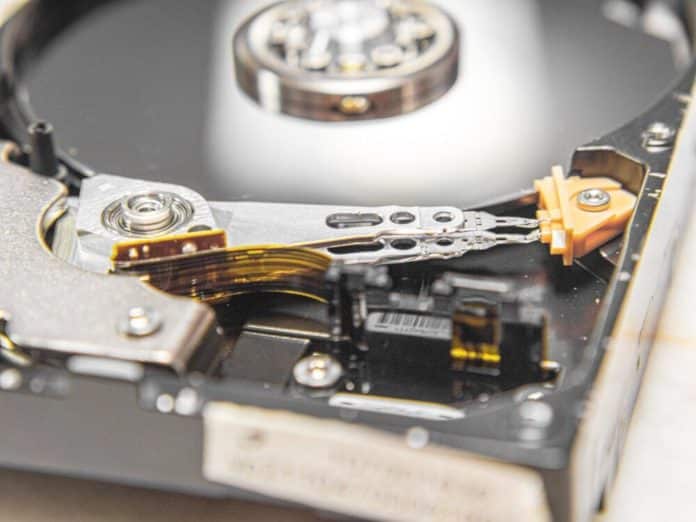“The reports of my death are greatly exaggerated,” Mark Twain once said. The same could be said about hard disk drives (HDDs), the once-ubiquitous storage medium that has slowly been receding into the shadow of newer technologies. As data centers and consumers store increasing amounts of their data on the blazing-fast Solid State Drive (SSD) technology, the question keeps coming up: when will HDDs finally outlive their usefulness?
A Brief History of Storage
The origins of HDD technology reach all the way back to the 1950s, when IBM constructed a server farm the size of two refrigerators and boasting a storage capacity of a whopping 3.75 MB. That’s a far cry from today, where a hard drive fits in a laptop computer, commonly exceeds a terabyte, and the largest at the time of this writing is over 18 TBs.
This capacity is greatly amplified in data centers, thanks to the advent of RAID technology, also known as Redundant Arrays of Independent Disks. With a RAID setup, dozens of HDDs can be operated in unison, storing and retrieving data that has been interspersed across all drives, behaving remarkably like one giant drive. RAID gave data centers a deep well of storage, along with redundancy to prevent data loss.
Solid State Drives (SSDs) emerged around the same time as RAID, first reaching commercial availability in the early 90’s, and slowly gaining market adoption until surpassing HDDs in units sold in 2021. Note, however, that HDDs still constitute the bulk of actual storage capacity sold, year over year. Unlike HDDs, SSDs have no moving parts and do not use magnetic storage; instead, they read and write data by pushing electrons through an array of transistors that store their state, even when the device is powered off.
Consumers have raced to adopt the new tech and enjoy the massive speed boost offerings of SSDs. Its smaller form factor has made SSDs the standard storage medium on virtually all new laptops, and they’re becoming the standard for desktops as well. By contrast, data centers have been slower to embrace solid state, largely preferring the tried-and-true HDD.
Also read: What Is RAID 10 – How RAID 10 Works
Speed Isn’t Everything
The going price of a gigabyte is coming down every year, but an SSD still costs eight times more than an HDD with comparable storage capacity. For the average consumer, that might not matter. Not everyone needs four terabytes of storage, and for many the standard-sized $100 SSD will satisfy their needs. But data centers are operating with storage needs magnitudes above consumers, and that price differential will add up fast.
That said, SSDs have lower power consumption, far lower heat output, and higher environmental tolerances than HDDs, potentially reducing a data center’s energy costs over the long run. Furthermore, their small form factor can even reduce the data center’s physical footprint, even further bringing down overhead costs. By many estimates, SSDs are expected to outlive their HDD counterparts, reducing replacement costs as well.
But HDD technology hasn’t spent the last decade frozen in time. They’re becoming cheaper and less energy demanding, even as their storage capacities keep increasing. Seagate, one of the largest manufacturers of HDDs, projected their drives will maintain a cost advantage over SSDs until well into the 2030s, and the company has plans to develop hard drives that push past the 100 TB mark.
Even when, or if, SSD prices reach parity with HDDs, the need to store data is growing faster than the actual capacity to do so. SSD manufacturing will have to kick it into overdrive in order to keep up with the growing data market, and they’ll still be facing competition from legacy storage. 2020 marked the first time an additional1 zettabyte (approximately 931,322,574,615 gigabytes) of storage was sold in HDDs alone, demonstrating that HDD manufacturing is still going strong.
Also read: Best SSD Benchmark Tools of 2021
HDDs Find a Niche
So long as HDDs maintain their edge in price, they will continue to see value in server farms and data centers, even if they find themselves in a hybrid role with competing technologies. For instance, where a certain set of data needs to be accessed more quickly and frequently, it can be stored on more expensive but faster SSDs, and the larger volume of less fresh data can be moved into cool storage on hard disks. A third set of data — one that’s rarely accessed but still worth storing — could further transition into the veritable data freezer on magnetic tapes.
Tapes are yet another antiquated storage medium whose demise has been predicted many a time, and yet continues to find relevance in the modern world, serving as a type of meat locker for data, and at the cheapest price per gig. The downside is that tapes are not always on, and they’re not always plugged in. Retrieving data from tapes can take close to a minute in most automated environments. Although they’ve disappeared from the consumer world, tapes are seeing greater adoption at big tech giants like Google and Microsoft for their price and reliability, and the technology has actually continued to evolve. HDDs may find themselves on a similar path, vanishing from home computers but occupying a critical role at data centers of the future.
Read next: Three Key Memory Technologies Driving Data Management



